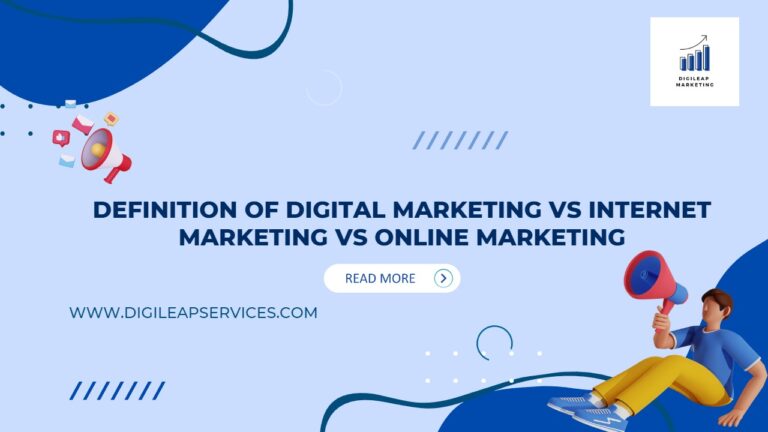Digital Transformation – A Guide for Business
Digital Transformation is the process of using digital technologies to create new or modify existing business processes, cultures, and customer experiences to meet the constantly changing business and market requirements.
In simple words, the adoption of digital technologies and techniques to improve efficiency, value, and innovation. Some examples include implementing tangible, customer-centric digital tools like mobile applications or websites that improve the customer journey. Digital transformation adds value to every customer interaction.
Digital Transformation is changing the way business gets done and in some cases creating entirely new channels of business. With digital transformation many companies have become critical of their ways of interactions and business, they are revisiting everything they do and analyzing each step they took, from internal systems to customer interactions both online and in-person. They have been asking game-changing questions like “Can we change our methods in a way that will enable better decision-making, improve efficiencies or better customer services with more personalization?”.
Why is Digital Transformation Important? What is its significance?
- Enhanced Data Collection: – Digital Transformation creates a system for gathering the appropriate data and using it fully for business intelligence at an upgraded level. It creates a way that different functional units within an organization can translate raw data into insights across various sections.
- Stronger resource management: – Digital transformation consolidates information and resources into a suite of tools for business. It can integrate applications, databases, and software centrally for business intelligence. It is not a department or functional unit; it encompasses every area of a business.
- Data-driven customer insights: – Data can be the key to unlocking customer insights. By having the proper knowledge and details of your customer and their needs, you can create a business strategy that is even more customer-centric. Data enables strategies to provide more relevant, personalized, and nimble content.
- A better customer experience: – Better the Customer Experience (CX), more customer loyalty. CX has emerged as the key driver of sustainable business growth. This can not only unlock efficiencies for your teams but also deliver more seamless, intuitive experiences for your customers.
- Encourages digital culture: – Digital Transformation encourages a digital culture when team members are provided with the right tools. While these tools provide a more seamless way to collaborate, they also help to move the entire organization ahead digitally.
- Increased Profits: – The companies that undergo digital transformation improve efficiency and profitability. According to the results reported by the SAP center for business insights and oxford economies, 80% of organizations that have completed digital transformation report increased profits, 85% say they have increased their market share, and on average, leaders expect 23% higher revenue growth than competitors.
- Increased agility: – Digital transformation makes organizations more agile.
- Improved Productivity: – Having the right tech tools that work together can streamline workflow and improve productivity. Automating many manual tasks and integrating data throughout the organization, empowers team members to work more efficiently.
Also, read our blogs on marketing strategy for applications to find the best strategy.
And read our blog on Types of online advertising platforms to strategize the best.
According to surveys, the top areas of focus in digital transformation are:
- Customer Experience à 23%
- Technology infrastructure à 17%
- Process efficiency à 16%
- Data management à 14%
- Company culture à 10%
- Employee experience à 5%
Also go through our blog on social media tools for marketing to understand the algorithm and to excel.
3 Key Areas of Enterprise Digital Transformation:
1) Customer Experience — working to understand customers in more detail, using technology to fuel customer growth, and creating more customer touchpoints
2) Operational Processes — improving internal processes by leveraging digitization and automation, enabling employees with digital tools, and collecting data to monitor performance and make more strategic business decisions
3) Business Models — transforming the business by augmenting physical offerings with digital tools and services, introducing digital products, and using technology to provide global shared services
Examples of Digital Transformation by Job Functions:
- Sales à Spreadsheets to a Cloud CRM
- HR à in-person training to online e-learning.
- Customer Support à Call support Centre to online bases and self-support portals.
Also, read the hacks for Instagram growth for better reach in Instagram.
Examples of Digital Transformation by Industry:
- Healthcare à Virtual visits, telemedicine, and patient portals.
- Hospitality à Online check-in, amenity booking tools
- Insurance à Virtual quotes and online claims process
- Retail à Loyalty cards, e-commerce stores.
And read our blog on how to increase followers on Twitter to optimize your Twitter account.
Now that almost all the companies go for digital transformation to grow their business so how does a company ace this game?
The answer is through digital transformation strategies. An excellent strategy can help you upgrade your business efficiently. Here are some ways to build Digital Transformation Strategies:
- Effectively use digital technologies that people want.
- Improve cybersecurity of E-commerce and financial technologies.
- Increase budget for research and development of digital transformation.
- Hire competitive talents that will fit the current skill requirements.
- Develop user-friendly digital systems.
- Use data analytics to improve current digital systems implemented by businesses.
- Convince members of the business organization to be open to digital transformation.
- Create integrative digital solutions that can be connected with other digital systems.
- Create company policies that encourage digital transformations.
- Form a research and development team for digital transformation systems.
- Attend seminars and conferences related to digital transformations.
- Seek advice from businesses that have successfully implemented digital transformation.
- Move away from legacy technologies and embrace it.
- Train employees properly on how to use it’s technologies.
- Improve the ability to adapt quickly to new digital business technologies Develop the ability to diagnose and conceptualize it’s strategies.
- Develop the ability to diagnose and conceptualize it’s strategies.
- Maintain 2 separate parallel systems when experimenting with it.
- Be flexible as a leader to get support from employees
- Keep communication lines open between IT & other departments.
- Accommodate the needs of customers and clients when creating digital strategies.
- Choose It’s solution vendors wisely.
And read our blog on how to increase followers on Twitter to optimize your Twitter account.
Also read our blog on how to increase followers on Twitter to optimize your Twitter account.
Conclusion
A company must adopt digital transformation to grow hand in hand with the current and upcoming world. It can help a company move from a basic level to an advanced level, earning a lot of profit, provided, the company plans out its strategy properly.
If you have any questions or concerns regarding SEO or want to improve your SEO for eCommerce websites, contact us at growth@digileapservices.com, and our team will get in touch with you.
Visit our blogs on digital marketing to read more blogs.












